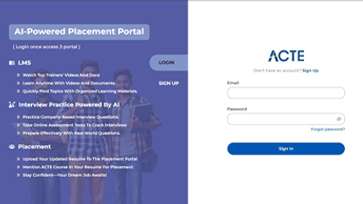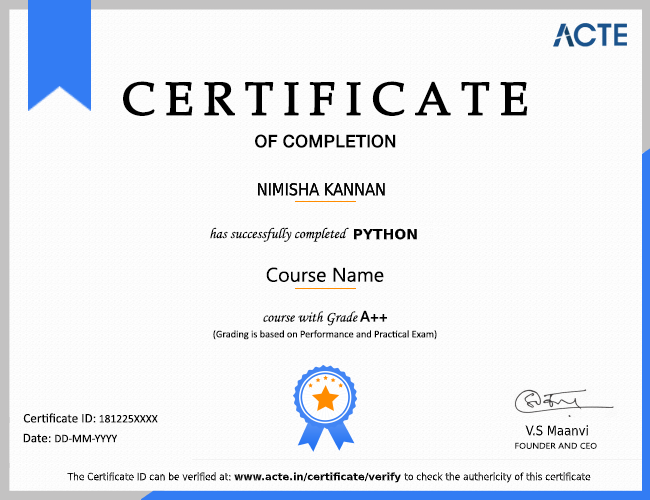Whether you’re a Tech Enthusiast, Entrepreneur, or are Interested in pursuing a career change, ACTE is a great place to get started with iOS mobile development. Beginning with the basics, you’ll gain a solid foundation of coding programs, their tools, best practices, and libraries related to iOS development. Once you’ve established your newfound skills, you’ll participate in Class wide programs which will further enhance your iOS development skills. Enroll Now!!! with iOS App Development Class Room & Online Training Course At ACTE
Become an iOS Developer in 2020: The 3 Pillars to Jumpstart your Career. More and more companies are relying on mobile apps, so iOS developers are in high demand. Becoming an iOS developer takes some effort though, and the talent shortage keeps driving salaries higher and higher, even for entry-level positions
Yes, iOS developers are in demand. But the basic rule is demand and supply, and now days market is over loaded with iOS developers. It's always good if some one can work on every part of a software system. You should be able to write back-end as well for your mobile(iOS) apps.
- Buy a Mac (and iPhone — if you don’t have one)
- Install Xcode.
- Learn basics of programming (probably the hardest point).
- Create a few different apps from step-by-step tutorials.
- Start working on your own, custom app.
- In the meantime, learn as much as you can about software development generally.
- Finish your app.
- Publish your app to the App Store.
- Upload your app to GitHub.
- Contact the company you want to work in!
We are happy and proud to say that we have strong relationship with over 700+ small, mid-sized and MNCs. Many of these companies have openings for IOS analyst. Moreover, we have a very active placement cell that provides 100% placement assistance to our students. The cell also contributes by training students in mock interviews and discussions even after the course completion.
- Education (if degree obtained or important classes taken)
- Work experience.
- Open source (provide links)
- Your apps (provide links if possible)
- Most relevant technical skills (keep it minimal)
- Anything else noteworthy (clubs you were in, developer meetup you founded, hackathon you won)
Let's first talk about what skills you need to build your own apps. Master Xcode: Xcode is the Mac app you use to create apps. Swift Programming: Swift is the powerful programming language that you use to code iOS, macOS, tvOS and watchOS apps. Build UIs: Every app needs a User Interface (UI).
Yes you can learn Swift and iOS Development without any prior coding experience. Swift has been designed by some of the brightest minds at Apple and they have made sure that the language is easy to learn even by absolute beginners.
Our courseware is designed to give a hands-on approach to the students in IOS. The course is made up of theoretical classes that teach the basics of each module followed by high-intensity practical sessions reflecting the current challenges and needs of the industry that will demand the students’ time and commitment.
Our course runs full-time for 12 weeks, but iOS development can take way longer to learn for a few reasons: First iOS basics are just super hard to get comfortable with on your own—mostly because Objective C is a difficult language in a lot of different ways (it looks pretty funky compared to other languages).
Some things are just very difficult and hard to learn because mobile development is a very difficult area of software engineering.But on the other hand users expect apps to be very fancy and powerful. So it is indeed very hard to become an iOS developer – and even harder if you don't have enough of passion for it.
- You'll be working with a technology you are passionate about.
- You're likely to make more money on iOS.
- iOS developer tools are more sophisticated.
- iOS is considered easier for beginners.
- There'll be less updates to make.
Why should you choose iOS?
Mobile developers have the opportunity to develop different types of applications for numerous operating systems, whether they’re hybrid or native, Android or iOS. Mobile development is the fastest-growing domain in the software industry, full of opportunities and freelance job possibilities. Mobile development—and the job of the mobile developer—is changing all the time, with updated versions of operating systems (OS), new devices, and new technological capabilities.
- The most popular operating systems are Android, iOS, and Windows. Currently, iOS and Android have taken over the majority of the mobile industry. According to recent stats, the two platforms account for around 96.7% of the entire market.
- With such huge audiences, iOS and Android offer plenty of opportunities for those who want to pursue a professional career in either OS, each with its own pros and cons for developers. Some mobile developers eventually strive to learn both operating systems to diversify their skill sets, but for beginner mobile developers, it’s best to choose the OS you’ll want to learn first and go from there.
- Mobile development is not just writing code in a programming language like Java or Swift—it’s asset management, designing and coding the user interface (UI), whether in XML or via an interface, then linking both together to achieve the end product.
- Once a developer is familiar with MVC design and its principles, here are some other things to consider that might help a developer select a mobile operating system to specialize in.
1. Time to learn
- They say the first step is always the most difficult one. It takes time to get familiar with any new technology, and mobile application development is no exception. Expect it to take some time to learn, depending on how well you understand basic development principles.
- Android and iOS both have different complexities and standards, which result in different learning times for both. iOS is a mature operating system compared to Android, and it has a predefined set of standards and rules. iOS strictly follows the rules, which often makes App Store approval difficult. iOS also has pretty good tools, like the newer Swift programming language, which makes its learning time potentially shorter.
- Android is vast, with more than 5000 devices from different vendors running different OS versions, screen sizes, and densities, which means a developer has to account more for compatibility and testing in the development process. In Android, outputs from the code can be a little complex, which makes it difficult for a beginner to understand it without diving into the depths of the code. Since Android is programmed in the Java language, developers with a background in Java programming may find it easier to transition to Android than iOS.
2. Development tools
- Development tools have a significant impact on mobile development. If a platform has mature development tools, its survival and success over other operating systems is guaranteed. How easy an integrated development environment (IDE) is to work with can be a major tipping point for some developers. The more intuitive and mature, the better.
- iOS offers the Xcode IDE for mobile development. Xcode is an awesome tool with mature features and characteristics. iPhone, iPad, Mac OSX, and iWatch applications can all be developed in Xcode. Its most important features are Code Completion, its UI design interface, managing directories’ hierarchy, profiling, debugging, core data, assets management, and many more.
- Eclipse has been used for Android development in the past but is generally not considered to provide as good of an experience for developers as Xcode. Android launched “Android Studio,” the official Android IDE that’s considered to be better than Eclipse, but it doesn’t surpass Xcode in terms of features and functionality. IDEs are usually a matter of personal preference; choose the one that works best for you.
In a nutshell, iOS has an edge over Android in regards to available development tools.
3. Hardware requirements
Android Studio is compatible with most major operating systems like Windows, OS X, and Linux. Android applications can be developed on a Windows machine, Linux, or on a Mac, but iOS isn’t as flexible. Xcode was designed only to run on Mac machines, so you’ll have to arrange for a Mac computer for iOS development because you cannot develop an iOS application on a Windows/Linux machine.
An alternative to this is using a Virtual Machine on a Windows PC. Based on my experience, I wouldn’t recommend this approach because you could potentially spend a lot of time on things other than development.
So, Android gets points here over iOS because it gives you the freedom to develop Android applications on any operating system.
4. Licensing/Membership
For iOS development, developers are required to subscribe to Apple’s membership program to publish apps to the App Store. Apple offers different programs with different requirements. An individual developer program costs around $100 a year, which may be a lot for a freelance developer who’s just building their business. On the other hand, Android doesn’t require any kind of subscription or membership program for development. But in order to publish an application, the Google Play store charges a one-time $25 registration fee.
5. Understanding and exposure to the code you write.
For iOS development, a predefined set of standards and rules listed by Apple must be followed in order for an app to be approved and published in the App Store. In Android, a developer has more freedom and can explore different solutions for the same issue, e.g. writing custom views or modifying native views. This isn’t restricted in Android, but in iOS this kind of flexibility is off limits. During iOS development, screens are designed with a drag and drop interface. This can be done with a mouse and shortcut keys, mostly in interface implementation. You’re only able to add tabs with the NavigationController which is a graphical interface, giving you fewer options. If you attempted to change the position of tabs in iOS, for example, the app would be rejected.
The Android UI graphical interface isn’t quite as convenient or handy, requiring you to write code in XML for optimal screen design. In the Android UI graphical interface, layouts and views are written in XML. Paddings, weights, margins, and gravities of Views are coded in. Designing screens in XML is helpful because it allows you to analyze the View hierarchy of a screen at a glance. Some Android-specific features like Background Processing (Services), Broadcast receivers, Intents, and Content Providers offer a developer very deep understanding of a mobile operating system. Moreover, it enhances your development skills, which can be used on other platforms.
6.Swift is the biggest positive when it comes to iOS mobile development
The foundation of app development lies in the coding, if that is weak, the app is not going to be a great one either. Swift, the popular programming language has been accepted and is being widely used by iOS app developers of all scale and backgrounds. The language delivers on its promise of delivering great results with minimal coding. The language, in fact also serves as quite an efficient communicator between the computer and the coder, thus making it easy for the computer to understand what is required of it.
7. High quality emulators make iOS app development experience impressive
Emulators make the whole process of mobile app development a lot more intuitive and help you create experiences that keep the app users hooked. This is why the quality of emulators is of particular importance. As compared to other operating systems, iOS emulators are definitely faster and also offer great support. This decidedly makes the iOS emulators better, helping the developers in speeding up their app development process and in making it a whole lot






























